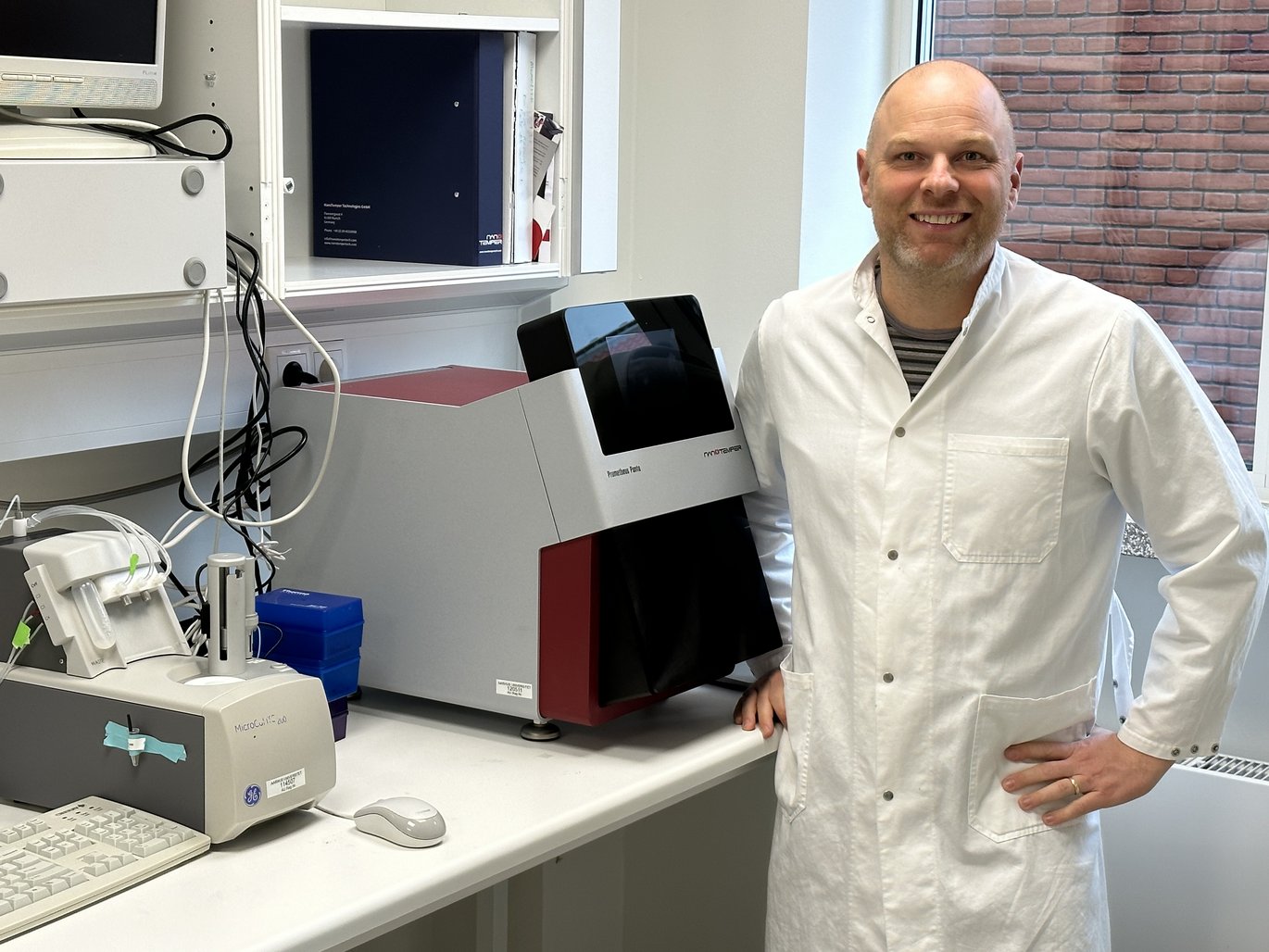Magnus Kjærgaard awarded an Ascending Investigator grant
Associate Professor Magnus Kjærgaard, Department of Molecular Biology and Genetics, Aarhus University, has been awarded an Ascending Investigator grant of DKK 10 million (Euro 1,34 million) from the Novo Nordisk Foundation over the next five years to test whether a new type of cellular structures - membraneless organelles - can be used in biotechnology. The goal is to be able to make environmentally friendly natural compound for use in medicine.

Living organisms have been waging chemical warfare against each other since the dawn of time. To that end, they have developed a multitude of different chemicals – that are toxic to bacteria or fungi, for example - which can attract insects through scents and colour.
Many of these chemicals can either be used as medicine, as nutrients or as natural alternatives to environmentally harmful chemicals.
Therefore, there is great interest in making natural compounds, but they are often complex molecules that are difficult to make by traditional chemical synthesis. Especially if it has to be done in a sustainable way.
About the Ascending Investigator grants
The Novo Nordisk Foundation awards two Ascending Investigator grants per year in Denmark.
The Novo Nordisk Foundation wishes to make significant contributions to the sustainability of society and the environment. The Ascending Investigator grant supports the continued development and consolidation of excellent research leaders within industrial biotechnology and environmental biotechnology in the Nordic countries. There should be a clear and strategic outlook to improve sustainability and provide high-impact solutions at a large scale.
A cell factory that makes natural compounds
In principle, the solution is simple: In their natural host, the chemicals are made by an assembly line of enzymes – a so-called biosynthetic pathway. With the help of genetic engineering, you can get, for example, a yeast cell to make these enzymes. And thus, you have a sustainable cell factory that can be grown in a large steel tank. In theory.
In practice, many biosynthetic pathways do not work in yeast. The enzymes are adapted to a certain environment in their natural host, which cannot necessarily be imitated within a yeast cell.
And it is not the same as changing the environment inside the yeast cell, as that would disrupt the cell's metabolism and make it less efficient.
"We would like to separate our new biosynthesis pathway from the host cell's metabolism by wrapping it in a new synthetic organelle", explains Magnus Kjærgaard. "We hope that it will allow us to adapt the environment in the organelle to our biosynthetic pathway without affecting the host cell".
The cell is divided into many different compartments called organelles
Just like a house is divided into different rooms, our cells are also divided into different areas. It helps to separate functions that should not be mixed together. For example, it is practical to separate the kitchen and the bathroom.
However, it is not straightforward to add new organelles to a cell. At least not until now.
"Recently, it has been discovered that cells have a new type of organelle - membraneless organelles. It is a bit like a room without walls", continues Magnus.
"Unlike ordinary organelles, it is easy to introduce such organelles into a cell. You just have to get the cell to produce a certain type of protein, which self-assembles into droplet - a so-called condensate”.
The aim of the project is therefore to design new membrane-less organelles, and use them as a kind of reactor inside the cell. This allows the biosynthesis pathway to be separated from the basic functions of the host cell.
From plant dyes to general principles
"Initially, we will try to get a yeast cell to make plant dyes more efficiently", says Magnus. But their ambitions do not stop at dyes.
"I hope that we can use the same principle to make many different natural compounds. Therefore, the goal is also to understand the general principles of how a membrane-less organelle promotes a biosynthetic pathway.”
"If we succeed in understanding the general principles, then we would be able to use it to make a large number of complex natural substances for use such as pharmaceuticals in a cheaper and more environmentally friendly way.”
For further information, please contact
Associate Professor Magnus Kjærgaard
Department of Molecular Biology and Genetics
Aarhus University, Denmark
magnus@mbg.au.dk
